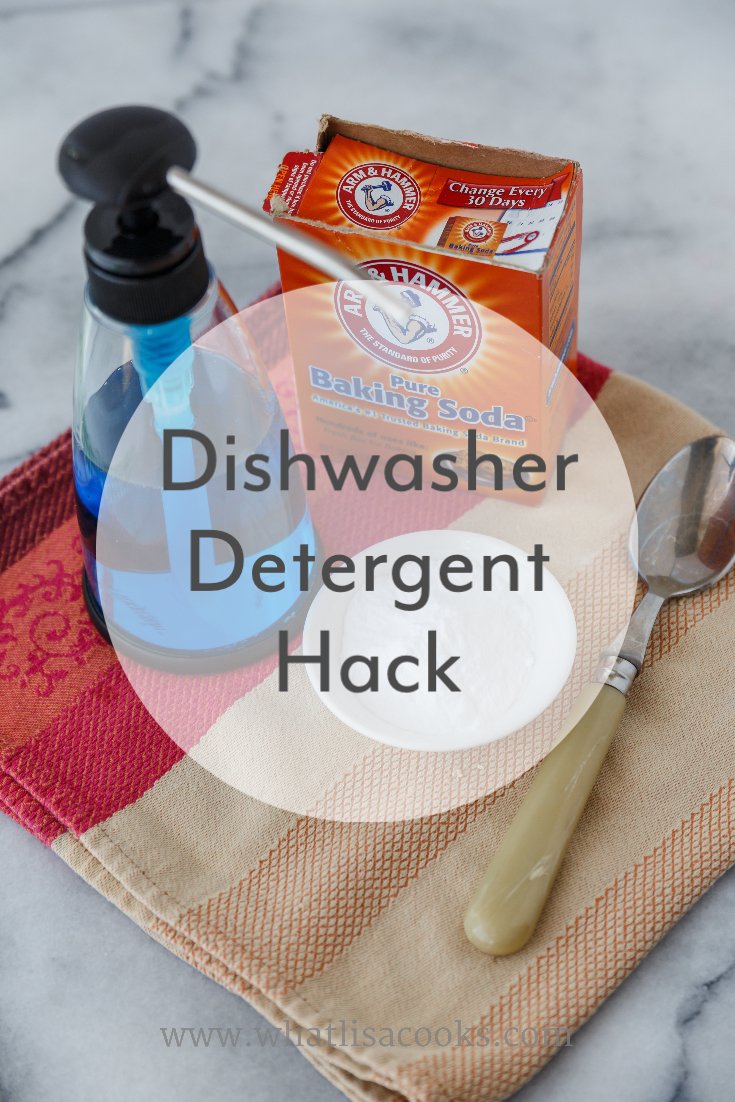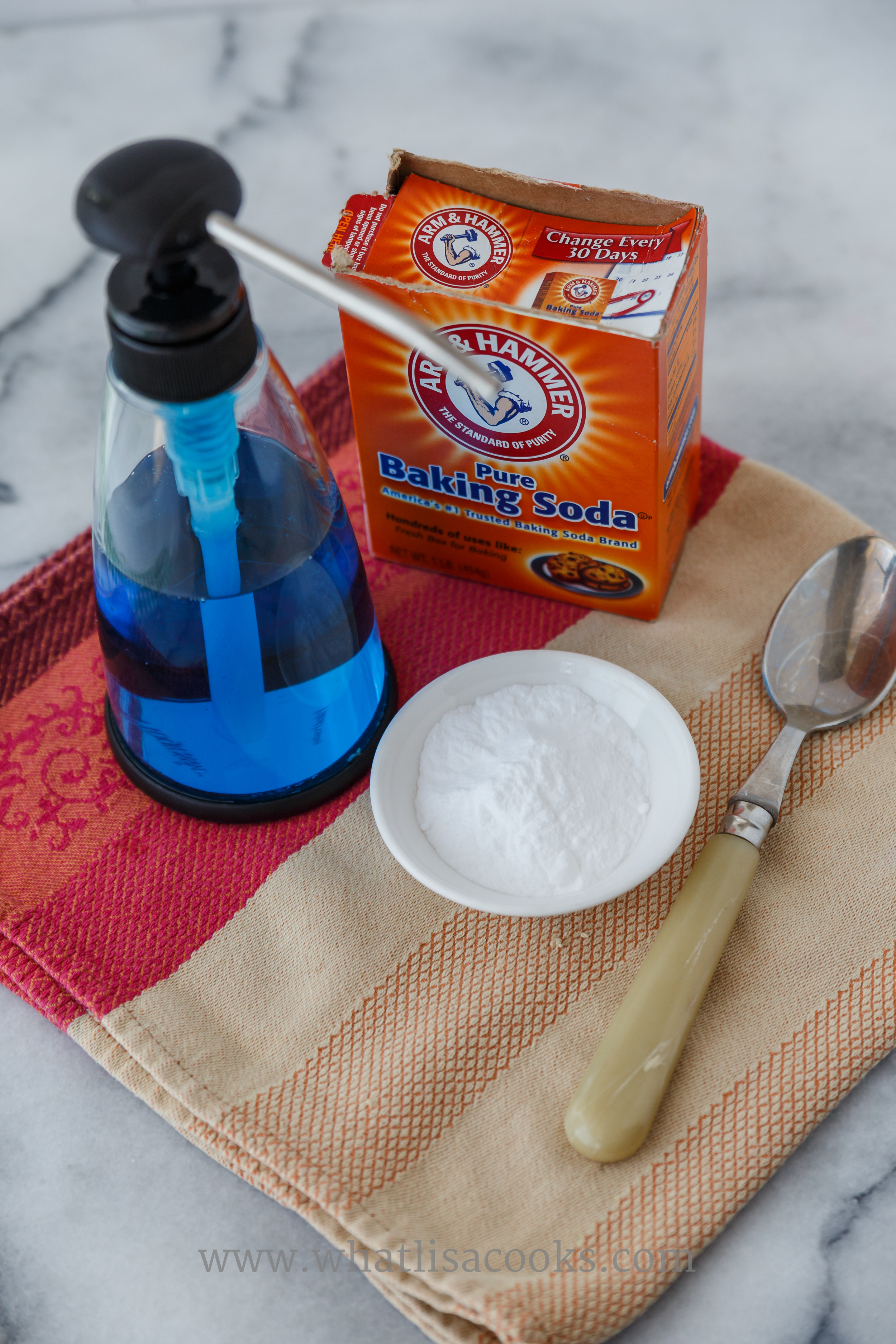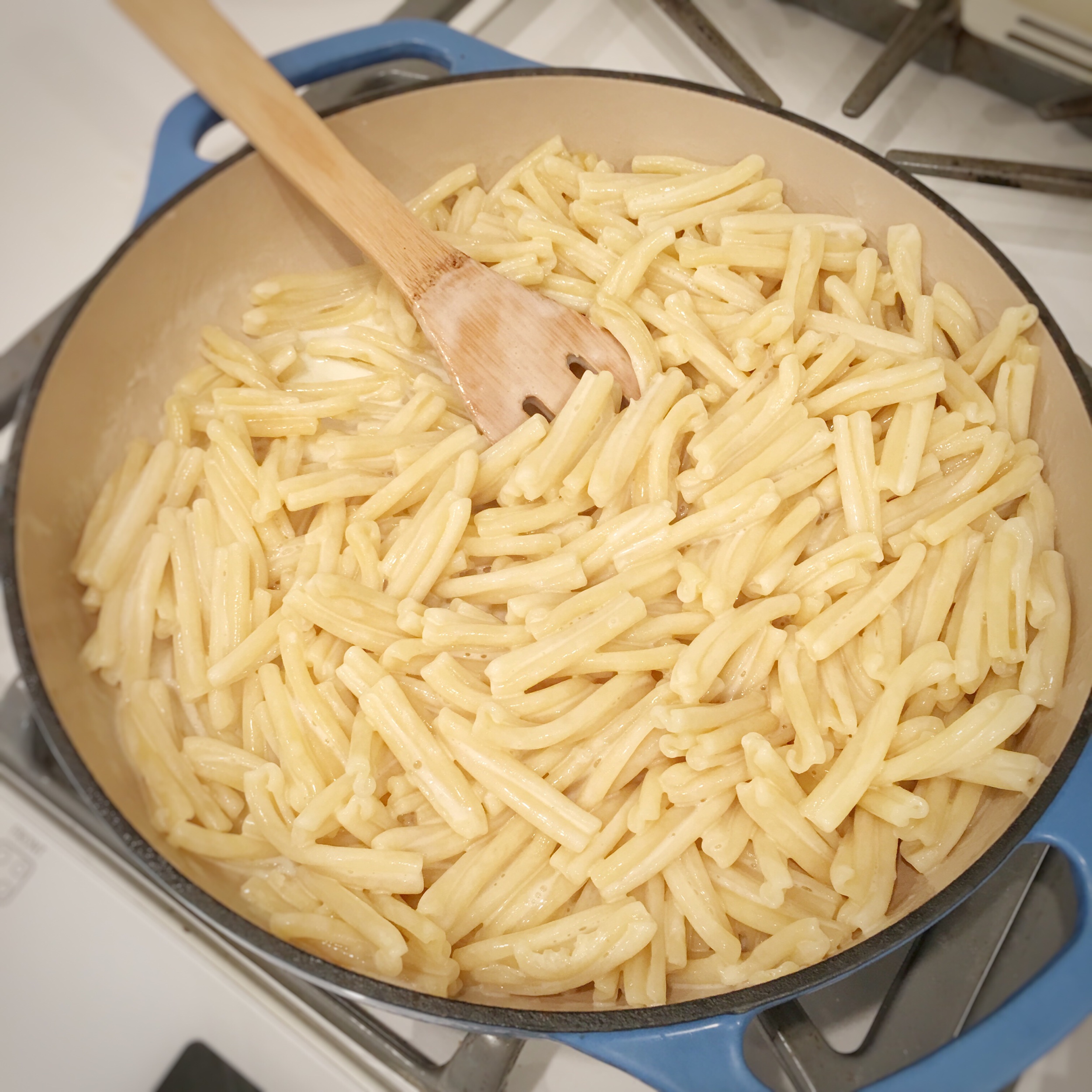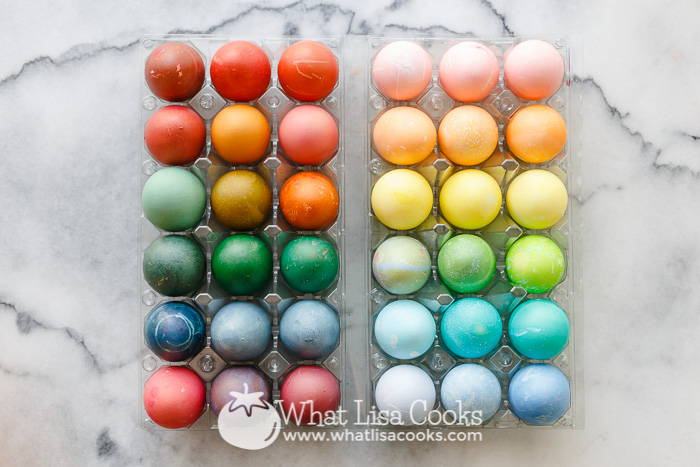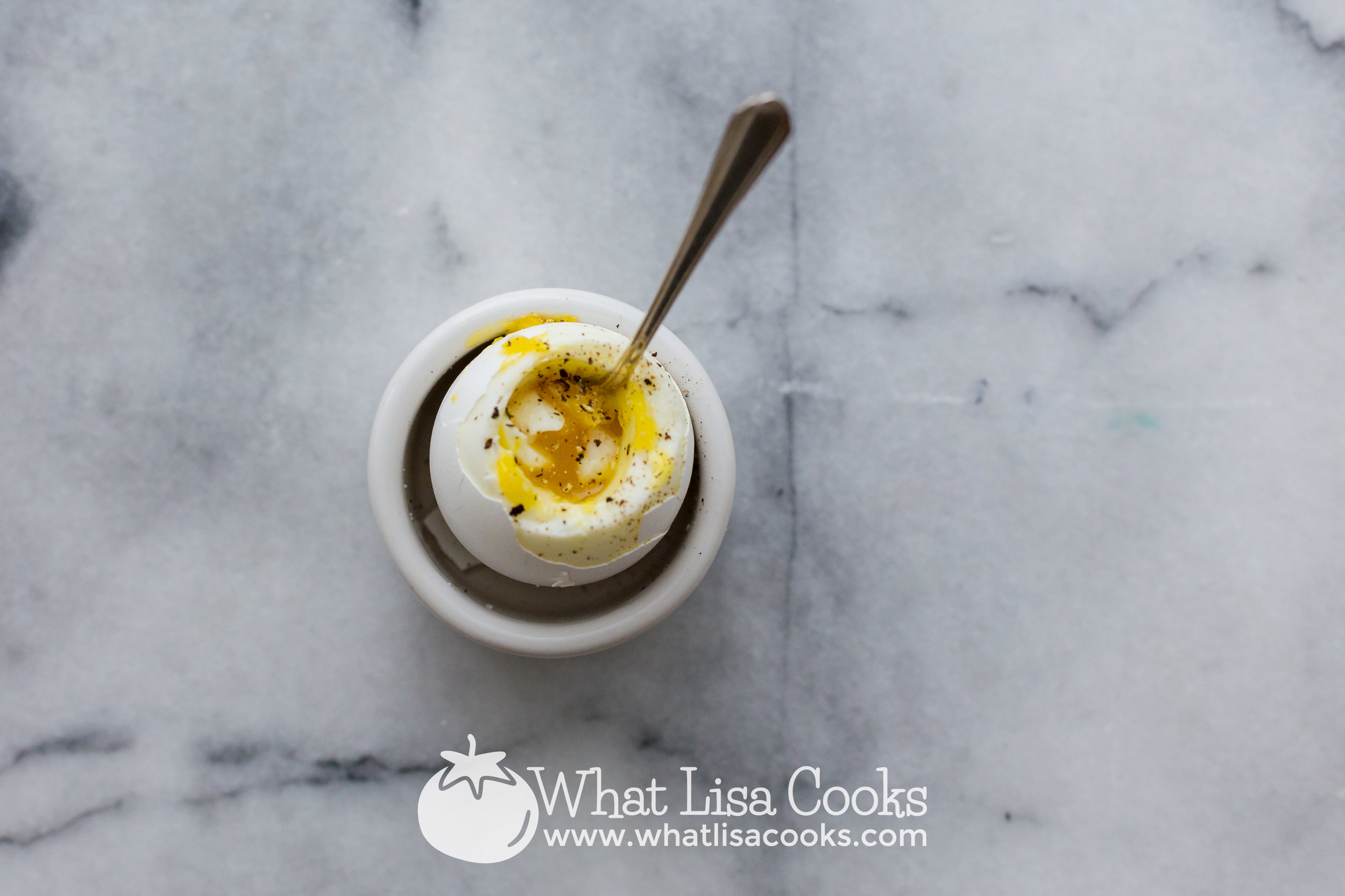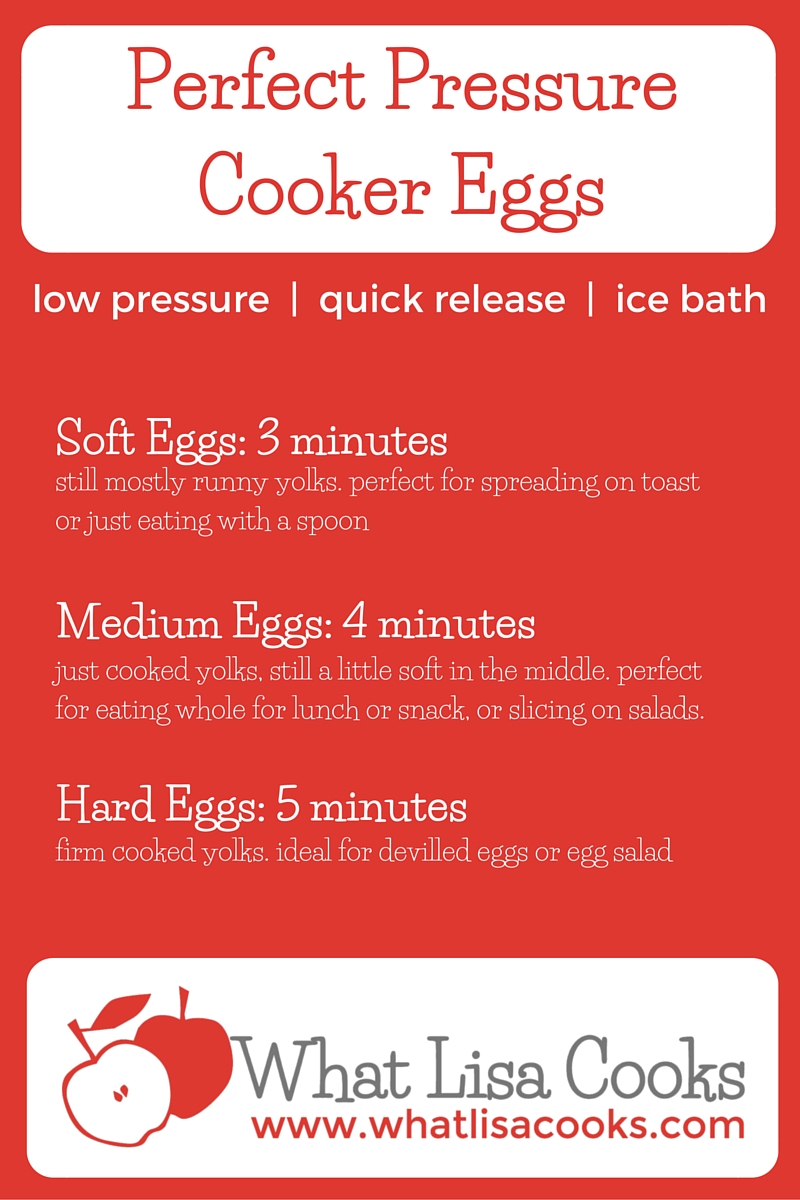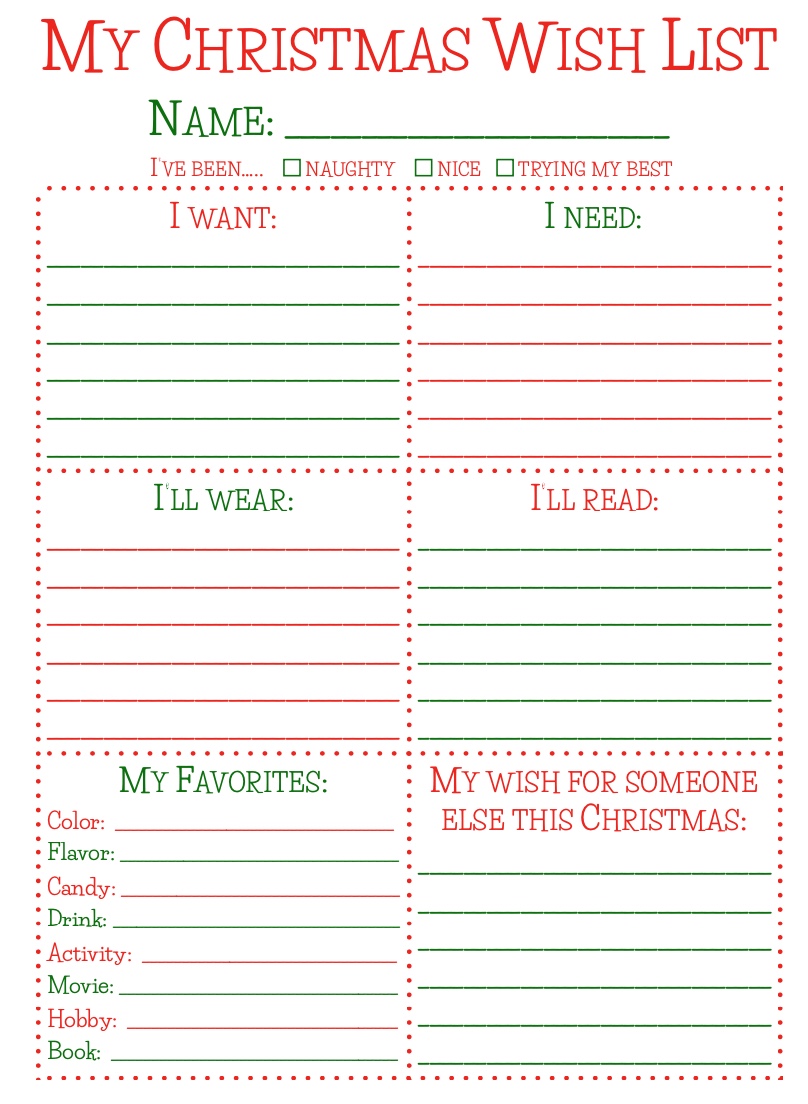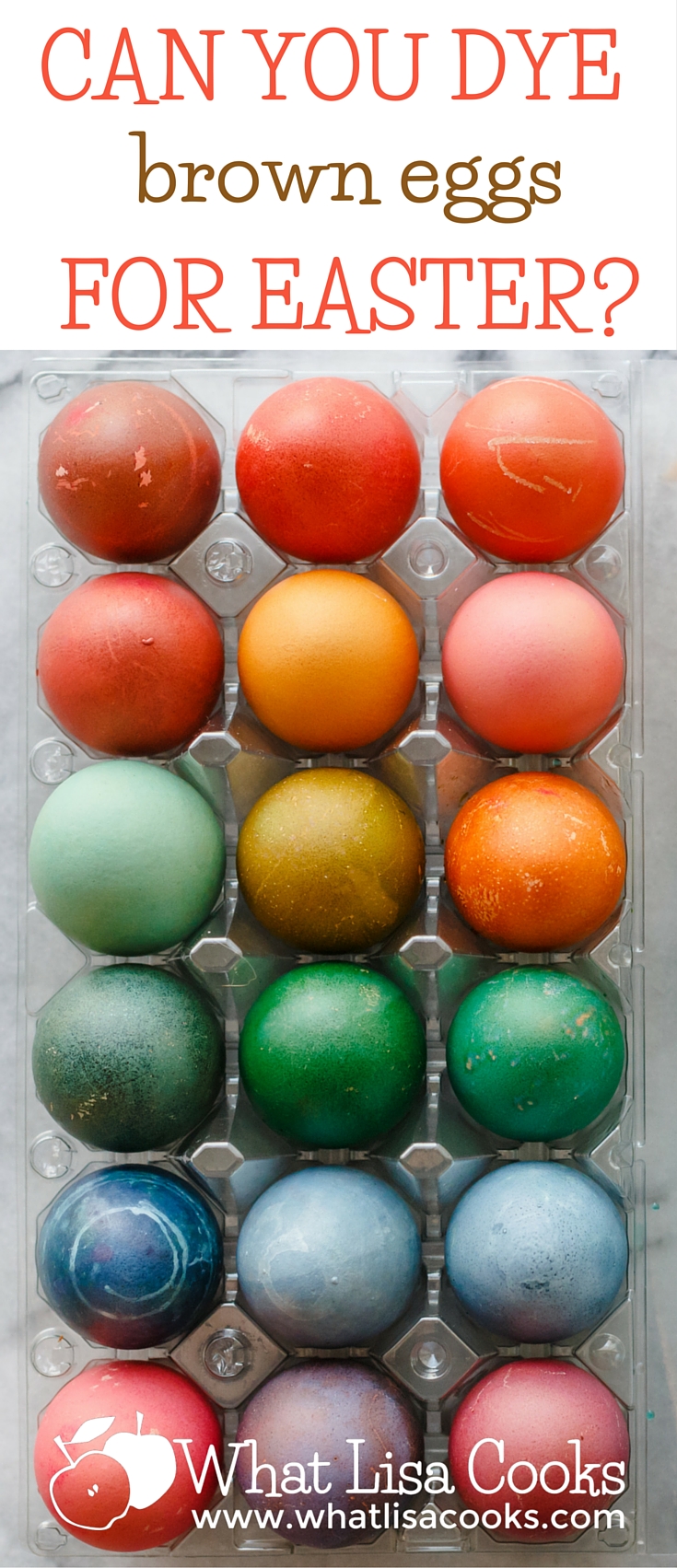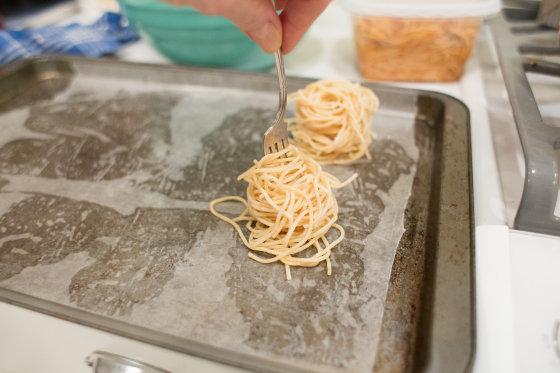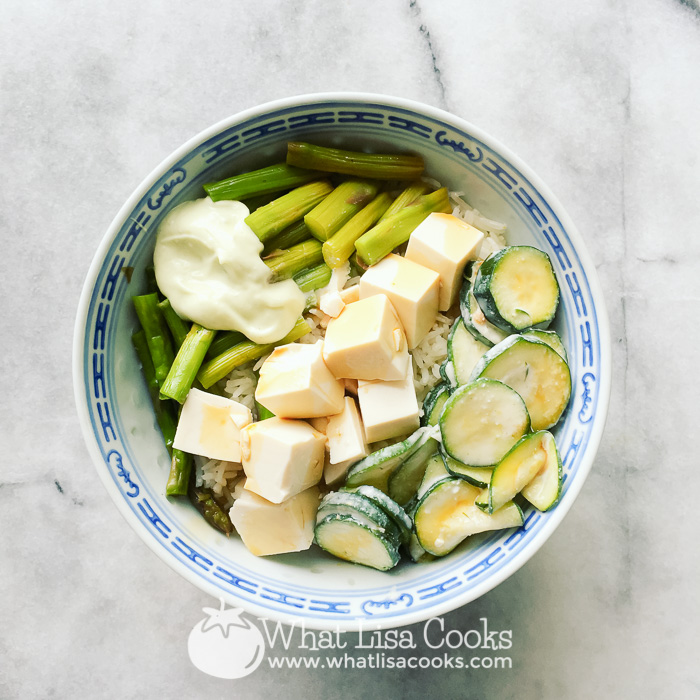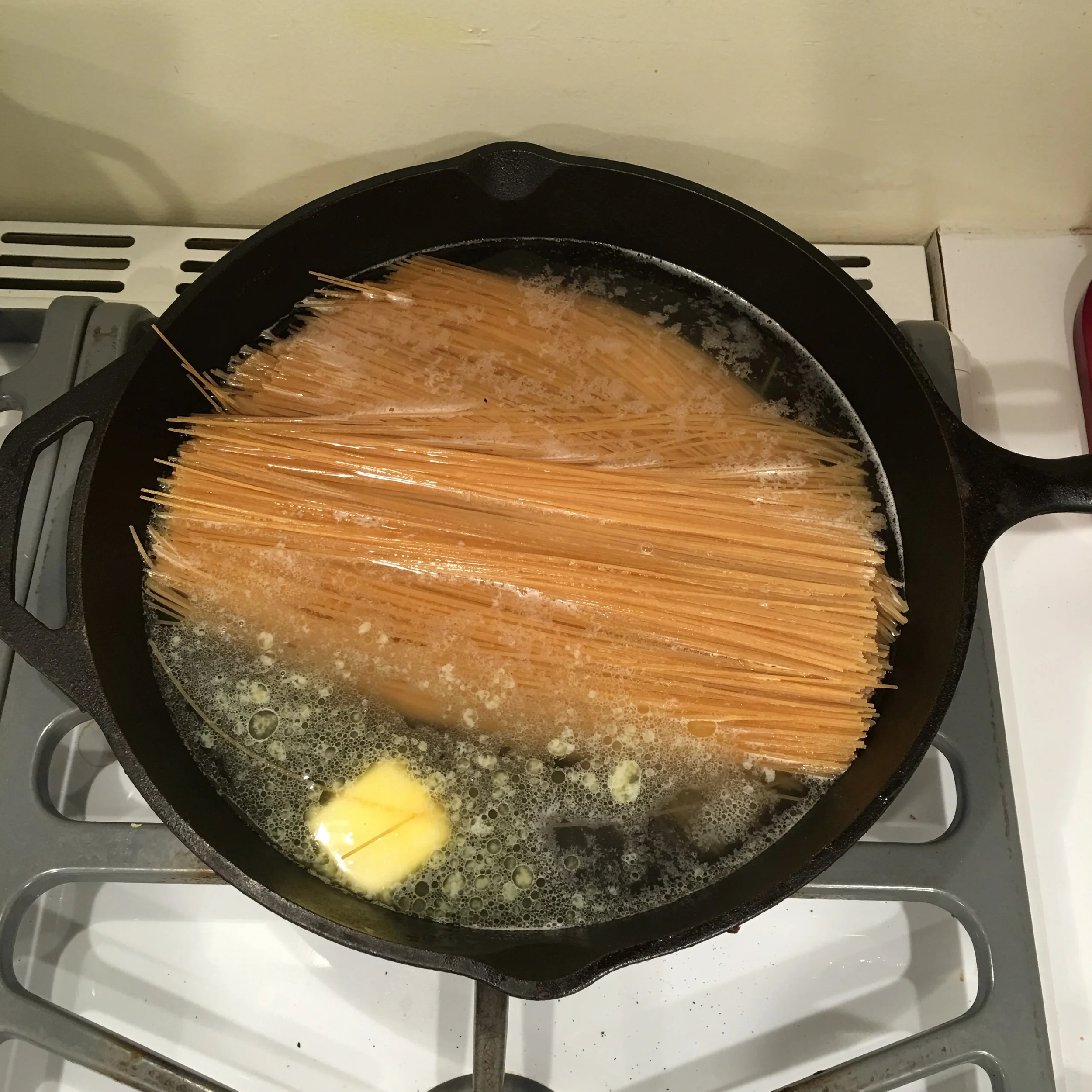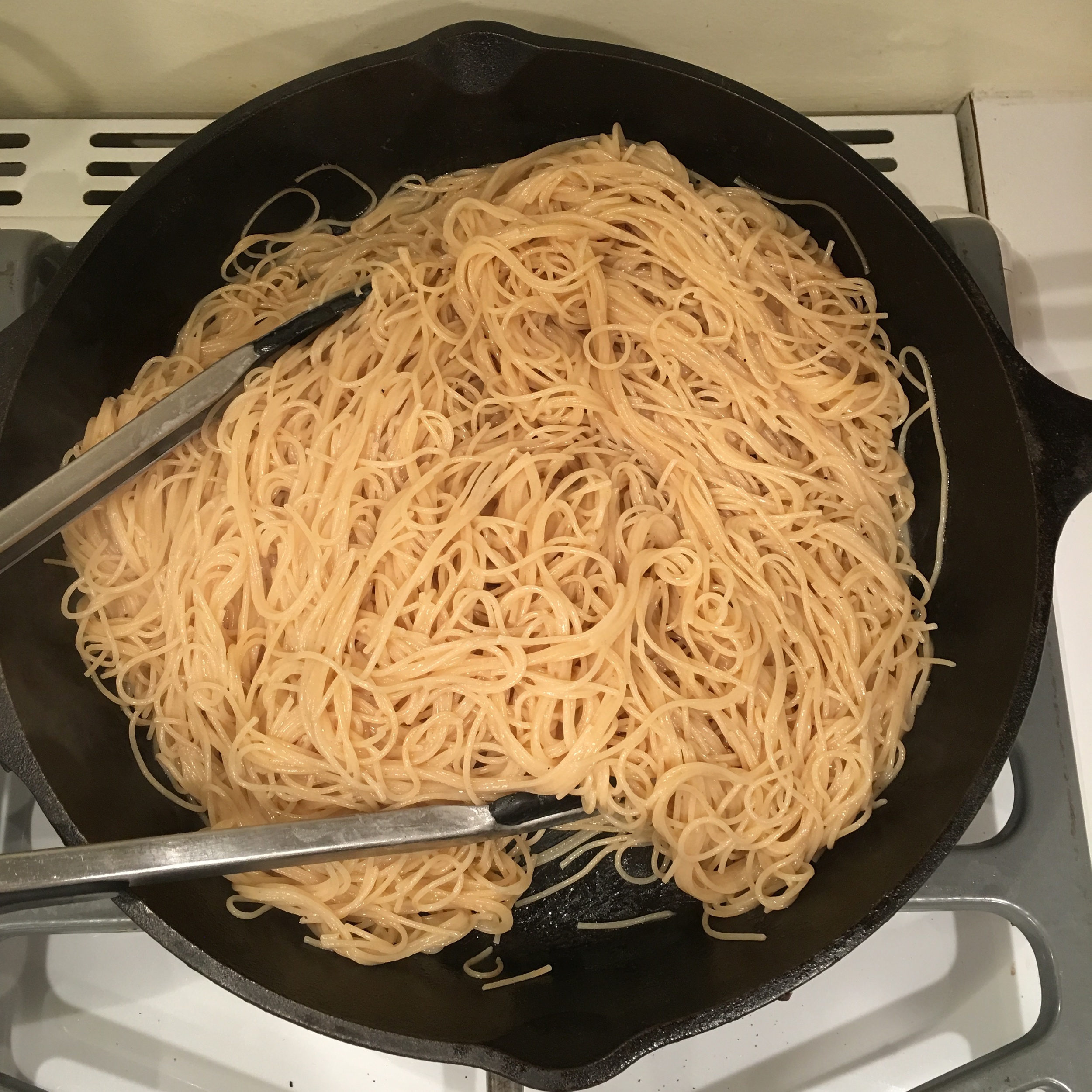Homemade Dishwasher Detergent
Run out of dishwasher detergent - here is my two ingredient dishwasher detergent hack that will get your dishes clean until you can restock.
Read on to find out how I use this DIY dishwasher detergent when I run out of the real stuff. This is a simple dishwasher hack for a baking soda dishwasher detergent.
I don't know about you, but running out of dishwasher detergent and not being able to do the dishes is just not an option around here. Getting behind on the dishes might be worse than getting behind on the laundry (which happens too often).
But what to do when it's late at night and you go to the cabinet and realize you're out of dishwasher detergent? A late night grocery store run sounds like about the last thing I want to do, and waking up to a mountain of dirty dishes sounds even worse.
There has to be a solution.
Have you seen any of these recipes online for making your own dishwasher detergent? They sound interesting, but a lot of them call for stuff that I just don't normally keep around my house, or stuff that I'm not sure I'm comfortable putting on my dishes (Borax, Oxy-Clean, etc.), or they require you mixing up some big recipe of stuff, which I'm not doing late at night.
But I saw one recently that called for just dish soap and baking soda. Things I always have.
So of course I had to try it.
We run our dishwasher at least twice a day here, and often three times on weekends. With 6-8 people at every meal, everything homemade, we go through a lot of dishes!
And so we also go through a LOT of dishwasher detergent. I try to buy a more natural brand, because when I open the dishwasher and I am hit in the face with a strong chemical smell, I just don't think that sounds like a good idea. If there's that much strong chemical odor left in the steam that comes out of the dishwasher, then I'm pretty sure that it's on my dishes too, and I just don't like the idea of that. So I try to go for a dishwasher detergent that is a little lighter on the chemicals. But those kinds are expensive, and for some reason they come in very small packages. I buy like 4 or 5 packages at a time, just to make sure we don't run out.
But what if we do run out? That would be an emergency! So when I came across this idea for running the dishwasher with just regular other household stuff, I had to know if it worked!
I had to.
And you know what? IT WORKS!!
I've been doing this every day this week. I run the dishwasher twice a day usually during the week, so I've been doing one load with our regular detergent and one load with this homemade combo. I've stuck with the regular detergent for the load that we run after dinner, since it's running at night and I'm not keeping an eye on it, and I've tried this new method for the load I run while I am home during the day - just in case I had any kind of over-sudsing incident.
And I can honestly tell you the results are identical. I haven't noticed any difference in the dishes between the two methods.
The loads with the homemade detergent are just as clean as the loads with the packaged detergent. I haven't added up the costs yet, but I can pretty much assure you that a bottle of dish soap and a big package of baking soda are going to be a heck of a lot cheaper than the expensive detergent tablets that I've been buying.
The recipe:
A couple tablespoons of baking soda
A few drops, or a small squirt, of Dawn dish soap.
Directions:
Fill your detergent cup with baking soda, you don't have to be precise, but with mine this ends up being a couple of heaping tablespoons. Then add a few drops of dish soap. I have a pump dispenser for my dish soap, so I just put about half a squirt in there. Close the cover, and run dishwasher as usual. That's all.
I experimented with quantity of dish soap. The first few recipes I read said just 2 drops, but that just didn't feel like enough to me, to really get a very full load clean. So I gradually added a little more until I felt comfortable. I haven't yet found an upper limit, but I haven't pushed it too far.
The baking soda is VERY important here. Don't try this without it! It keeps the soap from forming suds. The reason they tell you never to use liquid dish soap in your dishwasher is because of the suds - you'll have bubbles all over your floor. But the baking soda apparently prevents that, so it allows the soap to do the grease cutting and cleaning, without making all those bubbles. I've opened my dishwasher at various points in the cycles to see what's going on in there, and there are no bubbles. I'm not scientist, so I'm not going to try to figure out why any of this happens. All I know is, my dishes are getting clean and I don't have soap all over my floor and I didn't have to buy dishwasher detergent.
I have not tried this with other brands of dish soap. I've tried lots of other brands of liquid dish soap for hand washing, and I keep coming back to Dawn, so that is what I used for this. The more natural and/or less expensive brands just don't work as well. I found that I was having to use so much more soap to just wash a sink full of dishes, that it just wasn't worth it.
I pour my dish soap into a pump dispenser that I keep next to my sink. I like this one because the spout extends out far enough that you can just pump it right into the sink.
So that's it. Dish soap & baking soda! Let me know if you try it!
No drain pasta - One pot Pasta!
The quick and easy way to cook pasta - one pot, no draining, ready in about 10 minutes.
I’m about to completely change the way you cook pasta.
Once you cook pasta with this no-drain one pot pasta method, you’ll wonder why you ever did it any other way. This is the only way I cook pasta any more - the no draining method.
All those years spent thinking pasta had to be cooked in gallons of water - I’m here to tell you that you don’t have to do that.
This way is so much faster, and it works perfectly every time.
Here is the basic formula for one pot no drain pasta:
1 package of pasta + 4 cups cold water.
In a shallow pot, one pound of pasta, any shape, needs about 4 cups of cold water. A standard sized package of most kinds of pasta in the US is usually one pound.
You can play around with this ratio and figure out what works for you, if you like your pasta softer or more firm, but I’ve found these quantities to be pretty spot on for us.
I add a bit of salt and butter, bring it up to a simmer, stir occasionally until the water is absorbed and pasta is cooked, maybe 10 minutes. If you want to add sauce of any kind, do that when most of the water is absorbed.
My kids favorite - which I recently found out that most children in Italy eat and they call it Pasta Blanco - White Pasta:
When the pasta is almost finished, add a little more butter and a few tablespoons of cream. Mix well until the butter is all melted. Taste and see if it needs a bit more salt. Serve with parmesan cheese on top.
This is so quick and easy. No waiting for water to boil! No rinsing. No draining. You are going to wonder why you ever did it any other way.
Pressure Cooker "Boiled" Eggs
The easiest way to make boiled eggs is to not boil them at all.
I've tried every trick out there for cooking easy to peel eggs. EVERY. TRICK. And I don't think there was a single one that worked consistently. Some methods would work one time, and then not the next time.
Then I discovered cooking eggs in my pressure cooker.
I'm telling you - perfect eggs every time, and the shells practically fall off.
If you have a pressure cooker and haven't hard cooked eggs in it yet, you must try. And if you like hard or soft boiled eggs but you don't have a pressure cooker - you must get one!
If you don't yet have an electric pressure cooker - let me just take a moment and tell you about mine. Don't be scared - they are not the dangerous things they used to be. They are electric and easy to program and super safe.
I have two! The first one I've had for several years and it is my favorite - is the Cuisinart Pressure cooker. It's a workhorse. The second one I had to try because everyone was raving about it is the Instant Pot. They are both great, and they both have their advantages. The Instant Pot is a multi cooker - it can be a slow cooker and a pressure cooker and a rice cooker and a yogurt maker, and I guess it does even more than that because they call it a 7-in-1 cooker. If you really think that you will use all those other features, then it is a great choice. But as for just pressuring cooking, I like the Cuisinart best. It has more options for adjusting your pressure cooking settings, and more options for timing, simmering, and sauteeing your ingredients before you start the cooking cycle. Those things are also possible with the Instant Pot, but I just find the Cuisinart to be more intuitive and easier to program and use. Also, it's less expensive. Either way though, you can't go wrong.
Anyway, back to the eggs. Here are the instructions.
Pressure Cooker Eggs:
Place a rack or trivet in the bottom of your cooker pot
Add about a cup of water - I like to use hot water just to get it going faster. You want the water to be under the rack, not touching the eggs. (be sure to read the directions on your cooker for the minimum amount of liquid you can use - I think it's about a cup for most.)
Carefully place eggs on the rack. A lot of recipes you read for this have you putting them in separate little cups or making little foil nests for them. I have never found this to be necessary and it just takes more time. Yes, occasionally one or two will crack, but I've found that this happens regardless of whether you "nest" them, so I really don't see the point. You can cook just one or two at a time if you prefer to eat them warm (best for soft cooked eggs), or I can fit about 10 at a time in my cooker without crowding them too much.
Close your cooker and set it to low pressure.
Cook according to the times below.
When your time is up - use the quick release method and get the eggs in an ice bath to quickly stop the cooking. I sometimes just dump a bunch of ice and cold water right in the pressure cooker pot on top of the eggs. This is quicker than lifting them out one at a time.
Cook times for pressure cooker eggs:
Soft Cooked: 3 minutes on low pressure, quick release, ice bath. These will have still slightly runny yolks. I LOVE these for breakfast - either mashed up on toast or just lop of the top of the shell and eat them with a spoon.
Medium Cooked: 4 minutes for on low pressure ,quick release, ice bath. These will have just solidified yolks, maybe sometimes with a small dot of wet still in the very center. This is my favorite if I'm making eggs to peel and eat whole for lunch or snack. I personally love to dip them in salt. I think this is also perfect for slicing on a salad.
Hard Cooked: 5 minutes on low pressure, quick release, ice bath. These will have fully solid yolks. This is best for making deviled eggs or egg salad.
But seeing is believing! You have to see how easy this is, so I made video. If you don't want to watch the whole cooking process, just skip forward to about the 4 minute mark, to see how they peel so easily that I can do it with one hand!
Quick and Easy Homemade Peanut Butter
I really had no intention to make peanut butter. Don't get me wrong, I love the idea of homemade nut butters. I've done sunbutter before, and it was great. But I try to prioritize my time and making all my nut butters at home has never really made it to the top of my list of things I should be doing.
But I love peanuts. I mean, I love roasted, salted peanuts. A quick handful or two is an awesome snack - it satisfies my need for crunchy and salty, and gives me a little protein. I bought some peanuts a couple weeks ago, thinking I was buying roasted and salted peanuts. Only to get home and realize that what I had grabbed was roasted and NOT salted. (That's what happens when you're trying to squeeze in a quick grocery trip in between pickups and dropoffs.) As far as I'm concerned, there is no place in my life for snacking on nuts that aren't salted. I know you raw nut lovers can disagree, but I love my salt.
With four kids, we go through a lot of peanut butter in this house. I buy lots of it, but sometimes it's fun to figure out how to make some of our everyday things from scratch.
And I can definitely tell you - once you've had fresh homemade peanut butter, you will not want to go back. Especially if you can make it with fresh peanuts. I recommend buying them from the bulk bins at someplace that goes through a lot of bulk food, so you know they haven't been sitting around for very long.
Not only does it taste amazing, but it's so easy!
Basically, I took a pile of peanuts and dumped the whole thing into my Vitamix, added a dash of salt, and voila! Peanut Butter.
Ok, it wasn't quite that magical.
But it was close. I had to coax it along at first - pulsing off and on, pushing it down several times. But once it got going and all that oil was released, it very quickly turned into a super smooth and almost liquid consistency. Amazing how something that seems so dry can turn into liquid! And the whole process took less than 5 minutes.
Ingredients:
1 pound roasted shelled peanuts.
1/2 teaspoon (or so) kosher salt.
A drizzle of honey to taste (optional)
Directions:
Put peanuts and salt in blender. Pulse and push down until the peanuts start to release their oil. This is the only slightly labor intensive part. It takes a bit of coaxing to get it going. But once they start to release their oil then you can move faster, and blend to the consistency you prefer. We like creamy peanut butter here, so I really let it go until there were no chunks left. Once you think it looks good, taste it. At this stage you can add a little honey if you like your peanut butter lightly sweetened (most popular commercial peanut butters have sugar in them), and you can also add a little more salt if you like, and then just blend long enough to get that well mixed in.
Pour in a jar, let it rest to firm up just a bit, and then get out the bread and jam, because you're going to want to make a sandwich.
Also note - you can follow this same technique with basically any kind of nuts or seeds. I've also made sunflower seed butter this way, and it tastes great. If the seeds or nuts you buy aren't already roasted, then you'll want to either roast them in the oven or toast lightly in a pan first, to really bring out the flavor.
Free Christmas Printables
A couple of quick printables I made for my kids for holiday fun - one is a wish list and the other is a sort of holiday bingo.
Free Christmas Printables For Kids
I made up a couple of quick printables for my kids for this December & holiday season, so I thought I’d share them here with you.
Christmas wish list printable
The first thing here is a free Christmas wish list printable.
I like the ideas I’ve seen folks talk about that focus on four gift ideas - something they want, something they need, something to wear, and something to read - so I went with that structure.
I also wanted to encourage them to think about someone else this Christmas, so I added a section for add their thoughts about a wish for someone else.
You can click on the image to get to a downloadable and printable pdf.
December Kindness Bingo
The second one is a fun little Kindness Bingo activity for the month.
I wanted something to help get us in the spirit of kindness and giving this year, without spending a lot of money. looked at a bunch of “random acts of kindness” things for kids online, but frankly they all looked like a whole bunch of work for me.
I wanted to come up with something that would get my kids thinking of and being kind to others, without just straight up creating a lot of extra work for myself. I’m exhausted enough as it is.
So I came up with this. They are mostly things the kids can do at home, independently, with supplies we already have. The younger ones might need a little help with a few these, but I mostly tried to add things that I knew my kids were capable of doing on their own. I wanted this for two reasons - one, because it’s less work for a lazy/tired mom; and two, because I think the act of kindness means a lot more when it’s really their own work.
I hope you have a wonderful holiday season and have some fun with these!
Can you color brown eggs?
Yes! You totally can!
I think we all got in such a habit of dying white eggs that we've just been convinced that brown eggs won't work. But they definitely do, and I think they make some of the prettiest colors. You have to let them sit in the dye a little longer to get the color to really soak in, but the wait is worth it. You end up with beautifully rich colors that I think look more "earthy" than the same store bought egg dye applied to white eggs.
We did a little comparison - these eggs were all dyed with the standard old store bought egg dye, mixed with vinegar according to the package instructions for vibrant colors. The group on the left are brown eggs (except the blue row), the group on the right are white eggs. (and all the little white marks are just where my kids drew on the eggs with the wax crayon).
Brown eggs are usually more expensive, so I don't know that I would go out and buy them just for Easter egg dying. But if you have them and weren't sure if you could use them - go for it! I absolutely love how they turned out.
Homemade "instant" oatmeal
It totally kills me that my kids prefer those instant oatmeal packets over real cooked oats. But lately I'm really trying to focus on choosing my battles, and trying to force people to learn to like oatmeal with some texture over the creamy, mushy stuff, just seems like a fight that's not worth fighting at this stage, especially on an already manic school day morning. But instant oatmeal packets have all kinds of strikes against them, and I just can't bring myself to buy them any more. The artificial flavorings in so many of the mainstream brands, the amount of sugar, and the cost - with 4 kids eating two packets each, we would use whole box at one meal. I have bought some organic ones before, which are a little better, but they still have so much sugar and are even more expensive. I had seen several mentions on various food blogs and pinterest boards about making your own, so I thought I'd give it a try.
It totally kills me that my kids prefer those instant oatmeal packets over real cooked oats. But lately I'm really trying to focus on choosing my battles, and trying to force people to learn to like oatmeal with some texture over the creamy, mushy stuff, just seems like a fight that's not worth fighting at this stage, especially on an already manic school day morning. But instant oatmeal packets have all kinds of strikes against them, and I just can't bring myself to buy them any more. The artificial flavorings in so many of the mainstream brands, the amount of sugar, and the cost - with 4 kids eating two packets each, we would use whole box at one meal. I have bought some organic ones before, which are a little better, but they still have so much sugar and are even more expensive. I had seen several mentions on various food blogs and pinterest boards about making your own, so I thought I'd give it a try.
There are lots of different versions of recipes out there, some of which are no healthier than the store-bought ones, calling for things like non-dairy creamer and way too much sugar. But I did find a few that I liked. I can't seem to find the exact page that I got the final recipe from that I ended up using, I'll certainly link back to it when I come across it again. But I don't think it was a totally original recipe anyway, as so many of them have the same basic proportions in common.
Homemade Instant Oatmeal
- 10 cups of quick cooking oats (I use this brand - 10 cups was almost the whole bag, so I think you could use the whole bag and be just fine)
- 1 teaspoon salt
- 1 cup brown sugar (I actually substituted coconut sugar because that was what I had, and I really like the flavor). Use more sugar if you know you want it sweeter, but I like the idea of keeping it less sweet to start, and then I can add a little maple syrup if someone really wants sweeter.
- 2 teaspoons cinnamon
- 1 cup powdered milk (I use this organic one).
Here's the key that all the good recipes seem to have in common: some of the oats need to be blended and broken down - that is what gives the softer consistency. So, put 4 cups of the oats in your blender or food processor and blend until almost like flour. Then just mix all the ingredients together. That's all.
I think you could easily go ahead and add in some chopped up dried apples or apricots, or nuts, at this stage as well. Given how fast I think we'll go through it, I think it would keep just fine. Maple sugar would probably be really good in this, or vanilla sugar too.
Most of the other recipes out there have you portion it out in 1/2 cup servings in individual snack bags. But I thought that seemed like way too much waste, so I just put it all in a couple of big containers and I measure it out when I am ready to serve it. I also thought for home use you could just as easily measure out your portions into pint sized jam jars, and then just add your water and serve right out the jars. For eating right away, using equal parts water to the dry mix seems about right, which I think would be the same as the packets. But I've noticed that instant oatmeal tends to get thicker as it sits, so if making ahead for lunch I would add a little extra water, so it's not too thick by lunch time. Maybe 3/4 water to 1/2 cup dry mix. I also like to add just a little cream or half & half to the finished oatmeal.
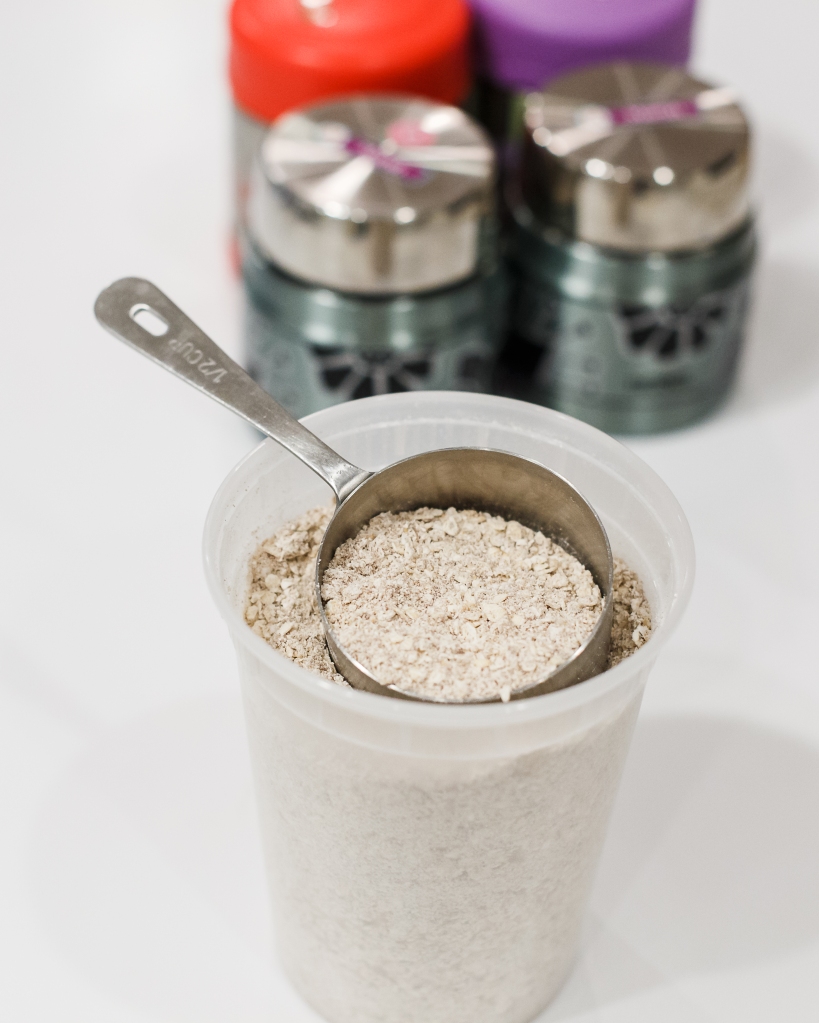
I made this last week and my kids ate it up for breakfast. And today I used it for breakfast for lunch (which my kids love). I measured the mixture out the night before, and just added hot water this morning when I was ready to pack up the lunches.
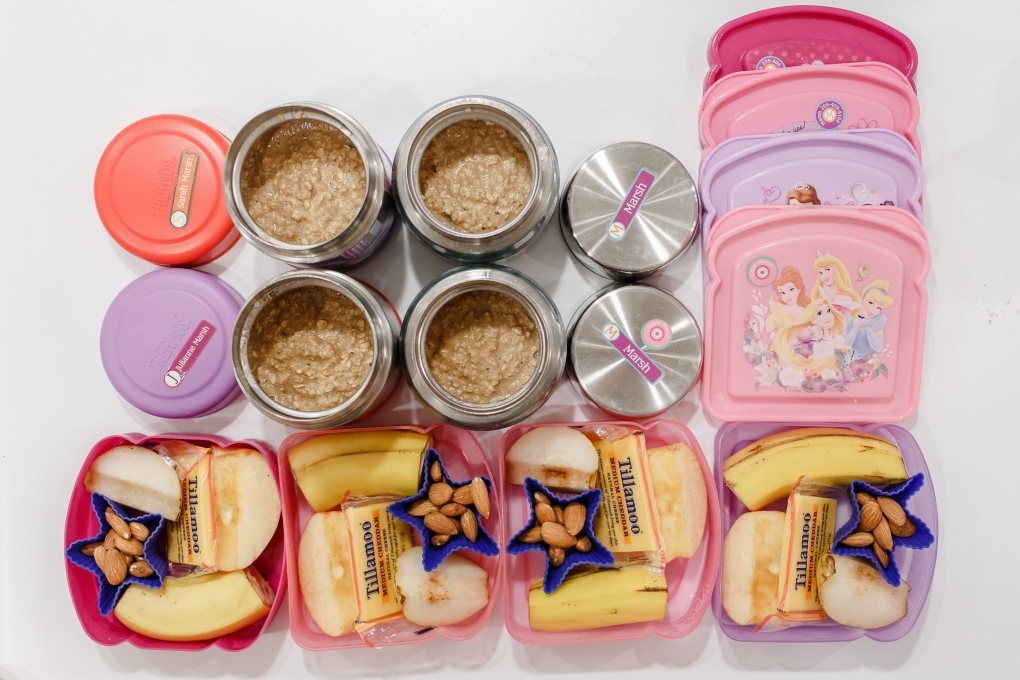
Enjoy!
Lazy mom's fish tacos
Taco night is practically a ritual at our house. We take it seriously. But that doesn't mean it has to be a ton of work - it just means it has to be good!
We also don't want to have the same thing for taco night each week. I like to keep it as an easy meal, but mix up the ingredients a bit so it doesn't get boring. We do tacos with ground beef, or beans, or chicken cooked any number of ways, and one of my favorites is fish tacos.
This is one of my favorite weeknight dinners, and a super easy way to do taco night just a little different. If you like fish tacos, but feel like you can't have them at home - you need to try this.
Basically, you just find some good quality fish sticks and cook them in the oven according to the package directions. (I like to let them get a little crispy.)
We like the fish sticks from Costco, and Trader Joe's has some pretty good ones too. Use any ones you like. I've also done this with other kinds of frozen fish - frozen filets meant for fish & chips, or other kinds of breaded fish. Whatever you like works great - as long as it's quick and easy!
And then, you just do all the usual taco stuff - lettuce or cabbage, sour cream, cheese, tomatoes, avocado, green onion...
For fish tacos I like to add a squeeze of lime, and some fresh cilantro is really nice if you have it. Basically, anything goes!
This is a great meal to have kids help with - small amounts of cutting, picking off cilantro leaves, mashing avocados, filling bowls. They can really feel like they are participating in the meal, even though there is very little actual cooking involved. There are plenty of opportunities for lots of jobs for little hands.
My family loves this kind of meal because they all get to make their own. I have found with my kids that the most successful meals are the "make your own" type of meals - kids love having some control over what goes on their plate. I try to give them a guideline that they have to have some protein and they need to choose at least one vegetable, and beyond that they can control their own.
Let me know if you try it - and what kinds of combinations you come up with!
Lazy Mom's Fish Tacos
Ingredients:
- Good quality fish sticks (or other frozen fish that you like)
- Taco sized tortillas - flour or corn
- shredded lettuce or cabbage
- limes
- sour cream
- guacamole or avocados
- cilantro
- diced tomatoes
- green onions
- salsa
- any other toppings you like!
Optional:
Serve with chips, rice, beans - whatever extras you like.
Directions:
Cook fish according to package directions. Serve fish, tortillas, and all toppings buffet or bar style. For standard sized fish sticks we do 2 fish sticks in one taco sized tortilla. You could also use bigger tortillas and make fish burritos.
Freezing Pasta
One of the keys to success around a house with 4 little kids is being prepared. For meals on busy days that means having things prepared ahead of time. A couple days of the week when we are running around to therapy appointments or classes in the afternoon I try to get dinner made in the morning and have it ready for us when we get home at 5:30. But that just doesn't always happen. So my solution on those kinds of days is to have things in my freezer that are easy to pull out and quickly serve. One of those things is cooked pasta.
A few years back I noticed that Trader Joes was selling bags of frozen cooked pasta - you just pop them in the microwave and serve, with cooked pasta ready in just 3 minutes. I bought those for a while. But as little bodies and appetites grow and grow, buying packaged things like that gets expensive - one bag of pasta doesn't do it for us. So I freeze my own now.
Whenever I am cooking any kind of pasta, I always, always make extra and freeze it. I do this with any kind of pasta. Penne is a favorite, because it's sturdy enough that it can hold up to being tossed around in the freezer a bit. All you do is just toss your cooked pasta with a little oil or butter, let it cool, and then spread it out on a baking sheet to freeze without sticking together. Then dump it onto a ziploc bag. When you want to use it, pull out the amount you want and warm it up. You can do this in the microwave for a couple minutes. Or you can put a little hot water over it and let it sit for just a minute or two - this method works especially well if the pasta got a little dry in the freezer.
For longer pastas like spaghetti - below you will see what I do. Take a fork and spin individual little servings onto a baking sheet (lined with wax paper helps keep them from sticking). They look like little birds nests. Then freeze these and then bag them when frozen.
Having cooked pasta in the freezer means I can have a meal ready for hungry kids in less than 5 minutes - thaw the pasta, toss it with a little sauce, or some butter & cheese, throw in some frozen peas or chopped broccoli, maybe dice up some ham or salami - a balanced meal in minutes.
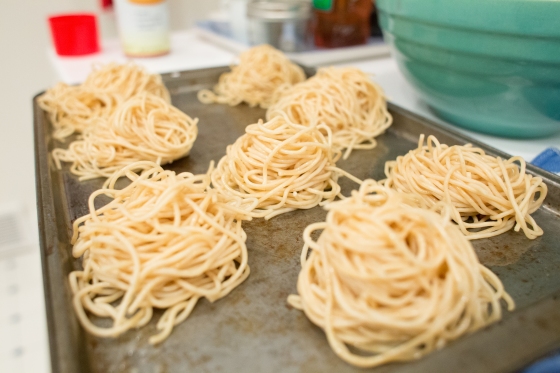
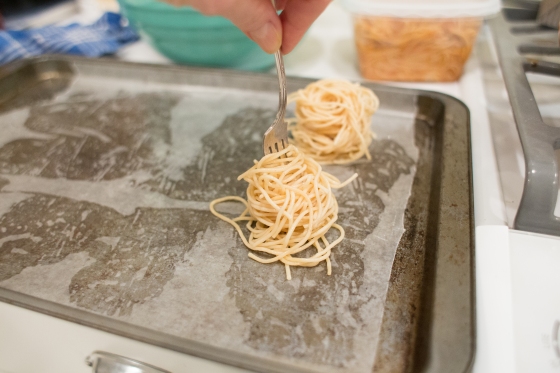
Easy Wasabi Mayonnaise
Do you ever get takeout sushi and wonder why the heck they give you SO MUCH wasabi?
Maybe it's just me, I don't know. I personally think a little wasabi in the sushi goes a long way - I like a little heat, but I also like to taste my sushi. So I always end up with extra wasabi.
But I may have mentioned before how I hate to waste food. Especially when it's the good stuff - like when we order sushi from a good place and they give you the real fresh grated wasabi.
So a friend turned me on to this tip and I've been doing it ever since: use the leftover wasabi to make wasabi mayonnaise. It's genius in its simplicity.
Just mix the wasabi into a jar of mayo - I think about a tablespoon of prepared wasabi to about a half a cup of mayo is about right for my taste. But this is really one that you can do however you like. If you like more kick, then you more wasabi. If you want it mild, then use more.
It's awesome on sandwiches, or for dipping veggies in. I love mayo on grilled or roasted veggies, and this is a great way to give it a little extra kick.
The other day I made myself a rice bowl for lunch, with brown rice, tofu, zucchini and some leftover asparagus. A good dollop of the wasabi mayo on top was the perfect to take it from ordinary leftovers to something really delicious.
A quick and easy way to cook pasta!
We've always been told that pasta had to be cooked in a big pot with lots of water, and we never really questioned it. Until now.
I have seen mentions of this alternative method of cooking pasta here and there, and figured I had better give it a try.
The basic idea is that instead of using a bunch of extra water in a huge pot, you cook your pasta in a smaller pan with just enough water to get it cooked through - no excess. The starchiness in the water is not a problem, because that extra starch is part of what contributes to an extra creamy sauce that will really stick to your noodles. Restaurant chefs have known about that trick for a long time - they always add a ladle of pasta water to their sauce.
Basic cooked pasta:
- 1 package (usually about a pound) of pasta
- 1 teaspoon salt
- 1 tablespoon butter
- 4-6 cups cold water (see notes below)
The butter might not be necessary in a non-stick pan, but I am using a cast iron pan so I always like to have a little oil in there.
The quantity of water will vary depending on your type of pasta and your desired end result. Here is used a very thin angel hair pasta and I just was serving it buttered, so I used only 4 cups. But for thicker pasta like penne you will need more water - so go up to 5 cups. If you are making a sauce then you will want to have a little water left in your pan after the pasta is fully cooked, to help blend in the sauce, so go up to 6 cups.
So - 4 cups for thin pasta, no sauce. 6 cups for thick pasta with sauce. Or adjust in between to suit your needs. As with everything, I think it's a bit of trial and error. If your water is all absorbed but your pasta is not yet fully cooked, then add a bit more hot water.
Directions:
Place everything in a pan just big enough to contain it all and wide enough that the pasta can be fully submerged in the water.
Turn on the heat and bring up to a gentle simmer, stirring occasionally to ensure the pasta doesn't stick together, until the pasta is cooked to your liking.
It will take about 10- 12 minutes, depending on the thickness of the pasta.
And that's it! Perfectly cooked pasta in less time than it would take to even get a pot of water boiling.
Once it's done you can serve as is, or add your sauce. My kids are picky about sauce, some like it and some don't, so I tend to serve the sauce on the side. But you could just add a little cream and some herbs and parmesan cheese to this for a super quick and simple weeknight pasta dish, or toss in a jar of your favorite tomato sauce.
I love a tip that helps me get dinner on the table faster!
Basic recipe: pancakes and waffles
Add to the list of things that I can't for the life of me figure out why I ever bought in a box: pancakes.
Pancakes and waffles are so easy to make from scratch. Call me lazy, but I love a recipe that's versatile and adaptable to a number of uses. I like to think about it once and use it a lot - and this one definitely fits that bill.
Add to the list of things that I can't for the life of me figure out why I ever bought in a box: pancakes.
Pancakes and waffles are so easy to make from scratch.
Call me lazy, but I love a recipe that's versatile and adaptable to a number of uses. I like to think about it once and use it a lot - and this one definitely fits that bill.
I started with the basic pancake recipe from my favorite cookbook Mark Bittman's "How To Cook Everything", and I have adapted slightly from there to suit our needs. I like to use whole wheat flour to make them healthier, and real maple syrup for a more natural sweetener. My pancake recipe is a little sweeter than most, because I personally like for the pancake or waffle to taste really good without the need for syrup. I make a lot extra and keep them in the freezer to pop out for my kids for a weekday breakfast or lunch, and it's just quicker and easier if they already taste great without having to get out the syrup. But if you're going to only eat these with a generous pouring of syrup, then you'll probably want to cut back on the sweetener in the recipe.
Basic Pancake Recipe:
- 4 cups flour (whole wheat, or half whole wheat and half white)
- 2 tablespoons baking powder
- 2 teaspoons cinnamon
- 1 teaspoon salt
- 3 cups milk (I use whole milk)
- 3 or 4 eggs - Enough to make about 4 cups of liquid when added to the milk & syrup, depending on the size of your eggs.
- 1/2 cup pure maple syrup (less if you plan on soaking your pancakes with syrup)
- 1/4 cup butter, melted and cooled. (optional, I often leave it out)
- 2 teaspoons vanilla
- butter for your pan
Directions:
Measure all the dry ingredients into a big mixing bowl and stir to combine.
For the liquid ingredients: I fill my big measuring bowl up to 3 cups with milk, then add the syrup and vanilla, then add eggs until it gets to around 4 cups of total liquid ingredients. Then mix all that together with an egg beater until well combined (or you can use a whisk). Then pour into the dry ingredients and stir gently until combined. Try not to mix more than necessary, this will help keep your pancakes nice and light.
For pancakes you want the batter to be pretty thin, they puff up a lot and stay nice and light.
Waffle batter needs to be just slightly thicker, so I use 1/4 cup less liquid if I'm making waffles - either use one less egg, or cut your milk back a little.
Then cook: Pancakes on a hot buttered griddle, or waffles on a buttered nonstick waffle iron.
I like to cook my pancakes in lots of butter, I think it adds that amazing final layer of flavor. Pour our a ladle full of batter onto a well buttered griddle. I have a big double sized cast iron griddle that heats really evenly and works great. And the extra big size is perfect for making a bunch of pancakes at once. If you are going to add extras I like to add it at this stage, when the top of the pancake is still wet. We love to add blueberries, or slices of banana, and mini chocolate chips are a fun little treat too. Then watch for a little browning around the edges and bubbles in the middle, and then flip. Serve hot with hot maple syrup, and we like to have whipped cream on ours too.
For waffles, a good waffle iron makes all the difference. I worked with a cheap one for years and I was amazed at how much better the waffles were with just a new waffle maker. They are light and fluffy on the inside, and lightly crisp on the outside. For a big family like ours, the kind that makes two at a time is a must-have. If you want flavored waffles then mix your extras into the batter. Finely chopped nuts are really great, or a little grated apple.
Notes:
- This is a double recipe because we like a lot extra, but feel free to cut it in half.
- You can use all white flour, all wheat flour, or a mix of both. Or take out a little of the flour and add in some oats, or ground flax, or wheat germ, or oat bran - whatever you like to make them even more healthy
- I've also made these with gluten free flour and they work great. They key to that is to separate the eggs, mix in the yolks with your batter as usual, and then beat the whites until soft peaks and then fold in. The beaten egg white provides the light and airy texture that you miss without the gluten.
- Use less sweetener if you really are going to soak these with syrup.
- I've done this vegan many times and it works great. Just substitute flax + water for the eggs. 1 T ground flax + 3T water, per egg to be replaced. Mix that together and let sit for a minute, then add it just as you would add the eggs.
- You can use brown sugar instead of syrup in the batter.
- When I want to make this more of a 'complete' meal for my kids, with more protein, I'll add a little less liquid and more eggs, or add some protein powder in with the dry mix.
- Options for extra flavorings are pretty limitless. We love blueberry pancakes. Bananas or apples are great too. Finely chopped nuts and a little orange zest are really good in waffles.
- If you want to take the extra time, separating the eggs and whipping up the egg whites is also a great trick to get really light and airy waffles.
- For pancakes, I pour the batter on the greased griddle and then add stuff - a few blueberries, slices of banana or apple, chocolate chips, then flip them.
How to Make Homemade Chicken Broth
Once you've had good homemade stock you'll really never want to go back. The store bought stuff tastes so bland, or sometimes tastes like nothing but salt. I love good chicken broth. I love it so much that sometimes it doesn't survive long enough to make it into soup. When someone in the house is sick, I make up a big pot of it and drink as much as I can. I think it's the definition of classic comfort food, and it's so good for you. Just do a quick google on the benefits of bone broth and you'll find pages and pages of info.
Once you've had good homemade stock you'll really never want to go back. The store bought stuff tastes so bland, or sometimes tastes like nothing but salt. I love good chicken broth. I love it so much that sometimes it doesn't survive long enough to make it into soup. When someone in the house is sick, I make up a big pot of it and drink as much as I can. I think it's the definition of classic comfort food, and it's so good for you. Just do a quick google on the benefits of bone broth and you'll find pages and pages of info.
The other great thing about making it yourself is that it's basically free. Free! Something so delicious, and so good for you - that costs you nothing. That's because you're making it out of stuff that you would otherwise be throwing away. I cringe at the thought of anyone throwing out the leftover carcass from their roast chicken or turkey - such a waste when you can turn it into such good broth.
People have asked for my recipe for making my chicken broth. It's not so much of a recipe as it is just a simple method with some guidelines for basic ingredients. You need chicken bones of course, and water, but the other flavorings are totally optional.
Here's what I like to use:
- a couple pounds of leftover chicken or turkey bones
- a few pieces of aromatic vegetables (traditionally onion, carrot, celery, but you can use others too)
- salt
- a couple quarts of water
- pepper and other seasonings as desired
- A quarter cup of some kind of acid - either a couple of sliced lemons, or some vinegar
- a good slow cooker or big stock pot
A few additional notes:
- You can use any kind of bones for this, it doesn't have to be whole roast chickens. If you've cooked up a bunch of thighs, or wings, definitely use the bones for those. Or if you really just need broth and you don't want to have a chicken dinner, then ask your butcher for scraps - wings, necks, whatever. I've heard that chicken feet make amazing stock.
- I keep a ziploc bag in my freezer, and when I trim veggies for cooking I add the clean trimmings to the bag - carrot tops, ends of onions, ends of celery, kale ribs. You can use just about anything, just remember that they are adding flavor so don't use anything that you don't want to taste too much. I wouldn't recommend things like broccoli or cauliflower, I think the flavor would be too strong.
- For seasoning I usually just do salt and pepper, but you could certainly throw in a bay leaf, a few sprigs of rosemary or thyme or sage, really anything you like the flavor of.
- A little acid of some kind somehow helps get all the flavor out of the bones. I usually cut a couple lemons in half and throw them in, they give a great flavor. If I don't have lemons then I do apple cider vinegar.
- Don't be shy with the salt.
- I make mine in a slow cooker so that I can leave it overnight or while I'm out of the house for the day, but you can do this in a pot. You'll just need to keep it on a low simmer and keep an eye on it.
- I generally figure on about a quart of broth per whole chicken. I usually do 2 chickens, so I put in a little more than 2 quarts of water and get about 2 quarts of broth.
After all that being said - I've made wonderful chicken broth with just chicken bones, water and salt. If you don't add other flavoring, then it's called stock. With seasoning and flavoring it's called broth. Technicalities. It's all good.
How to make your broth:
After you've had your lovely roast chicken dinner, take all the remaining meat off the bones and put it away to use later in your soup. Put all the scraps and bones and any leftover drippings in your slow cooker - don't forget the skin, it adds great flavor too. Add in your vegetables, seasoning, acid. Add enough water to completely cover it all (in a big slow cooker with bones from 2 chickens you should be looking at about 8-9 cups of water). Turn your slow cooker on low for as long as it will go (mine has a timer that will go for 10 hours). Go to bed. The next morning you will have a lovely stock. You can call it good at this point, or you can just let it keep going. The longer you let it cook, the better it will taste. You might need to add a bit more water. So give it a stir, and taste it. If you were a little shy with the salt at first then you might want to add some now.
When you are satisfied that it's ready, strain out all the stuff. I put a strainer over a big glass bowl and ladle everything into that, catching the chunks in the strainer. Some people will then strain through cheesecloth or something fine, to get all the little bits of stuff out. I usually don't do this because I don't mind the stuff, I'm making soup anyway so it will be fine. But if you want a really clear broth then a separate straining might be good.
You don't have to cook it for 24 hours. You can make a really good broth just simmering on the stove for a couple hours. The slow cooker is just an easy way to bring out even more flavor.
If you want to be even more frugal - you can actually make two whole batches of broth from one set of bones! Just strain out your first batch of broth after simmering overnight or all day, and fill it up with water again, add a little more salt, and let it got another 8-10 hours. The second batch might not have quite as much flavor as the first, but it will still make an amazing soup.
If your chicken was really fatty, you might want to separate the fat. In the one pictured I didn't bother, and you can see there's just a tiny bit of fat on the top. I'm ok with that. But if that is going to bother you, then you must have one of these handy fat separators. They work great.
And that's it! Now go make your favorite soup recipe. Or just pour some in a mug and drink it. A lot of people freeze theirs, but ours never lasts long enough to bother with that.
How I have ended meal time battles with a picky eater.
Thoughts about how and why I stopped fighting with my picky eater and made meal times work better for us.
I'd like to introduce you to the pickiest child I have ever known.
Does it surprise you to learn that I have a super picky child? I know that people think that my kids must eat everything, because I post pictures of the wide variety of foods that I serve them. But just because I serve it, doesn't mean they all eat it. (But that doesn't stop me from serving it.)
Up until a few weeks ago, I could count on one hand the things this child would reliably eat, and maybe on my other hand the things she would *sometimes* eat. So, a total of maybe 10 food items at any given time.
Before I had kids I was of the opinion that you could just make kids eat something. I figured you just don't give them an option to not eat it, and they will eat it.
Growing up I remember spending a lot of time sitting at the table in front of a plate of cooked carrots and peas because I was required to clean my plate before I could be excused. My parents weren't mean about it, but I think we had the rule that you had to have some of everything that was served, and you had to clean your plate. I think they had the idea that if I just would eat it, then I would learn to like it. It didn't work. I still don't like cooked carrots, or peas, or lima beans, or corn mixed into stuff. And I'm still very picky about the beef that I eat, I have a steak at most maybe once a hear and that is enough for me. All of the things that they made me eat as a kid - I still don't really like.
I have learned that pressuring children to eat does not work.
What I have learned, as mother who takes food and nutrition very seriously, is that making children eat a food they don't want isn't the key to long term success. It just creates a recipe for miserable power struggles at every meal. Threatening or bribing does not work. Creating arbitrary rules does not work. Negotiating does not work. All of these things create battles that aren't necessary. You might have short term success and get a child to reluctantly clean their plate, but it's not setting them up for long term healthy eating, and most likely not going to make them like those foods. Studies have shown that over time these battles will cause a negative relationship with food that will last them a lifetime, and can even lead to living on junk food, or possibly even eating disorders. I do not want that for my children.
I've tried all the "tricks".
I've learned this from experience. I have gone the rounds with this child. I've tried bribing her. I've tried tell her she has to taste it. I've tried telling her she has to eat one bite (what some people call a "no thank you bite"). We tried making a rule that once she turned four she at least had to taste the food (that worked for about a month). I've tried to tell her she has to choose a protein and a veggie. I've tried telling her that she has to choose something green. I've tried hiding foods in sauces or soups or dips.
I know all the tricks and I've tried them all. They might work on some kids (they sometimes work on my other kids), but they don't work on this kid. If she does not want to eat it, she WILL NOT eat it. You will not get any food in her mouth that she does not choose to eat. She will choose to have not even one bite of dinner before she will eat a food that she does not want. This child is STUBBORN. If there is a power struggle to be had, she will have it.
So I don't do it any more. I have stopped fighting with her.
I put the food out, and I let her decide what to eat. The food is just presented, with no drama and no pressure.
I put the family meal on the table, and let her choose what of it to eat. I don't make special or separate meals of 'kid food'. I do my best to make sure that there is some part of the meal that I know she will eat. If I've made something that I am pretty sure she is not going to want, then I also don't mind getting out some cheese or yogurt to add to the meal. The key is that it is put on the table as part of the meal, and not presented as making a separate or special "kid food" meal. I'm not going to punish her with no dinner just because she doesn't like what I have offered - I don't think that's how you make a child feel good about coming to the dinner table.
I got rid of the junk, and I no longer worry about snacking.
I no longer keep anything in the house (or at least within sight and reach of a small child) that I am not comfortable with letting her eat at any time. It's not like we ever had a lot of junk food, but we did have some stuff that I didn't want her choosing all the time. So it's out of sight. Our snack drawer no longer has packaged granola bars and goldfish. It now contains dried fruits and nuts, my homemade instant oatmeal, seaweed snacks, and a small amount of whole grain cereals and crackers - all things that I am fine with my kids having at any time. I have a drawer in the fridge that she can reach with single serving packs of cheeses that she can help herself to. I keep her cup of milk in the door of the fridge where she can reach it. I set out snacks on the table in the afternoons that consist of fresh veggies, fruits, nuts, and cheese, so that all the children can help themselves.
I've given up on the idea of "spoiling your dinner" with a snack. If the "snack" is healthy food that nourishes her body, then why does it matter if she fills herself up with nuts and cheese at 4:30? Maybe 4:30 is just when her body needs food. Regardless of whether she eats, she still comes to the table with us at family dinner time, and participates in the conversation, and usually at least drinks some milk. But I no longer subscribe to the idea that we need to force our bodies to a meal time that is convenient for somebody else's schedule. I want my children to learn to eat when they are actually hungry, and stop eating when they are no longer hungry. That doesn't stop us from sitting down to a family dinner every night, but it just means that I am not going to stress about how much anybody eats at that time.
I provide the food, but I let her choose what and when she is going to eat.
I let her see what the rest of us are eating and how much we like it. I let her experience the food through sight and smell, and even touch if she wants to. If she wants to have a tasted of something in a separate little dish so that it doesn't touch the rest of her food, that's fine. I continue to expose her to all of the food so she can learn what a normal healthy meal should look like. I let her be involved in the shopping or cooking if she wants to. I let her help arrange the things on the table. I let her see that her siblings are willing to taste things, and that sometimes they like it and sometimes they don't, and that's OK.
And then I leave it up to her to decide when she is ready to try something. I make suggestions, I provide the choices, but she decides whether to eat.
I do not fight with her about her meal.
That's all. I make a variety of healthy food available, and I let her decide. I don't tell her to try one bite. I don't even ask her if she wants to taste. I just say "this is the dinner, eat what you want".
Of course I worried for a while whether she was getting enough nutrition. I went back and forth about whether I should be trying harder to make her eat more so that she didn't get malnourished. But I kept being reminded (by her) that making her eat what she didn't just wasn't going to work. I do give her vitamins, the occasional fortified organic cereal, and lots of smoothies, to make sure she is getting the core nutrients she needs while she is taking the time to accept new foods at her own pace.
And do you know what? It's working!
Just in the last few weeks, she has started asking to try things. She has tasted more new foods in the past 2 weeks than in the past 2 years.
The child that wouldn't eat eggs: Last week asked for the boiled egg off my plate, and ate almost half of it. Over the weekend she asked for some of the scrambled eggs at breakfast, and ate two servings.
The child that wouldn't eat meat: The other night she asked for a piece of ham. Just out of the blue, "can I try some ham?". And she ate it.
The child that won't eat anything green: Monday night with her dinner she chose cucumbers. Tuesday night she chose to put both lettuce and cabbage in her taco.
Earlier this week she watched as everybody gushed about how delicious the broth was from the chicken. So she asked for a taste. And she liked it, and asked for a bowl of broth.
I am happy. She is happy.
The war is not won, but these little victories are underscoring for me that my approach is the right one for this child. Meal time is so much easier. She is smaller than her siblings, but she is healthy and growing along a perfectly acceptable curve. Her color is good. Her energy level is good. She is meeting her developmental milestones and then some. She is learning and thriving. So I feel confident that she is getting the nutrients that she needs, while she explores and tries new foods at her own pace.
I think as parents we spend too much time worrying. I see so many comments from parents saying they worry that their child won't eat vegetables, or doesn't get enough protein, or that their child is too addicted to the junk food. Stop doing that. Just make a wide variety of healthy food available for them to choose from, and then let them choose without worrying that they will make a 'wrong' choice. Children like to feel control. So let them have control.
Recognize their differences and don't try to make them fit your expectations.
One of the biggest things I've learned about parenting in these past 7 years is that each child is so unique and different. Having twins really teaches you this. Having two children come out of the same womb, with the same treatment, the same diet, the same everything, and seeing how different they can be, really teaches you a strong lesson about how our personalities are formed before we are even born.
No matter what the situation, there is no single approach that will work for every child. I have found this to be the case with all of my children at every single major milestone - whether it's sleeping, potty training, separation, weaning from bottle or breast, or giving up their pacifier. Children will achieve each milestone at their own pace, when they are ready. You can push them to fit your timeline, but it will be a difficult and painful battle for all involved. Or you can gently guide and show them the way, and let them achieve their milestones on their own unique schedule. Your life will be so much more peaceful, and their success will be so much sweeter.
This couldn't be more true than with their relationship with food and eating. Everything I thought I knew about feeding kids was thrown out the window with this child. She didn't fit any of the approaches that work with my other kids. So I had to really step back and reevaluate my approach with her.
And I'm so glad I did.
A peek into my small kitchen - and how I make it all work
From the archives - in our old house we had a very tiny kitchen. But I still managed to cook lots of amazing meals for our family of six.
I try really hard to keep my small kitchen clean and organized. It's the space in the house where I spend the most of my time. I put a ton of thought into the design and layout when we created it, and I am constantly re-arranging as our habits and needs change. For a small space, it works very well for me and for the needs of our big family. I get comments and questions about the space every time I share a picture that shows some of the kitchen, so I thought you all might enjoy a bit of an overview of my space and a tour of how I use it.
It is a small galley style kitchen. Even though it's tight on space, I still am very happy with what we came up with when we remodeled it on a very tight budget over 10 years ago. If you have an opportunity to do some updating to a small kitchen, there a couple of key factors I recommend keeping in mind:
- White. White feels open and bright. And having everything the same color gives you a sense of continuity and makes the space feel much bigger than it actually is.
- Lots of light. One of the most important things to me in the remodel was to put in as much light as we possibly could. I have 8 recessed can lights in the kitchen (including 1 over the sink on its own switch), and 6 in the dining room. We how have most of these switched to LED bulbs, so I feel ok with having all these lights on much of the time. I need bright light for cooking, and I think it also really helps brighten and open up a space. It's one of the biggest comments I get about my kitchen, how wonderfully bright it is. (and also on the electrical topic - if you're re-wiring, take the opportunity to put in LOTS of power outlets).
- Get rid of the clutter. I know it seems hard in a smaller space, but covering your counter tops with stuff is just going to make your kitchen seem even smaller. We put a lot of thought into the space we had and got really creative with adding space wherever we possibly could. The kitchen looks and feels so much better when everything is in its place - which is off the counter.
- Look for things that do double-duty, or give the illusion of more space. Our stove is a standard width, but I chose one that had grates that went all the way across the whole top, because I thought it gave the feel of a bigger space. And our microwave also doubles as a convection oven, so I have the use of two ovens when I need them.
- Get creative about creating space - look up, look down, where can you add storage? More on how we did that later.
- Really think about how you are going to use your space. Prioritize your storage needs. Things you use the most often should be kept closest to where you will use them, and then move outward from there, with the items you use the least often being the furthest away from the main work space. Don't take up valuable space right next to your stove with serving dishes that you use once a year.
Nothing you see here is expensive. This is all stock stuff from Home Depot. The cabinets were stock, the counters are just solid white laminate, the floor is vinyl. It was what we could afford, and I think it still totally works. I especially think that if you are going with less expensive materials, then you should not try to fake a fancy look. Solid laminate looks much better than something that's trying to look like fake marble, and I think that embracing the vinyl floor and going with a simple patter looks so much better than faux wood.
On the counter in the kitchen the only things that live permanently are the coffee pot, the SodaStream, and the paper towel holder. We could find a place to hang the paper towels, but we use them so much and this is a place where the kids can reach them, and the roll often gets moved around for meals, art projects, mess clean ups, etc. It drives me nuts to have the compost bucket out here, and I do have room for it under the sink, but I've found that it only reliably gets used if it's sitting right next to where I'm working. Our city has recently started threatening to fine you if you put compostables in the trash, so I'm really trying to be better about using it, so I've started leaving it out most of the time.
We don't have room under our sink for a trash can (we have recycling there, trash bags, dish soap, and space for the compost - so I found the narrowest trash can I could possibly find.
The barstools are from Ikea.
We made some decisions in our planning that left our dining room a little smaller, but made the overall space so much more functional. There used to be a slightly higher half wall behind the sink. We took that down to extend an eating bar out and have the whole thing all one height, it makes the counter space feel so much bigger, and I have space for my kids to sit and have a snack or help with cooking (we have a fourth stool that I keep in the garage and bring out if I've got all four kids at the counter). And we added the cabinets and counter in the dining room. That was just the back of a brick fireplace. It technically made the room smaller by about a foot, but it gave us so much more storage. And because we went from dark brown brick to bright white, I don't think it actually looks smaller at all.
I love that it's so open from the dining room to the kitchen.
The bookshelves just overhead are one of my favorite features.
Another thing we did which I absolutely love, is added the bookshelves up at the ceiling. They fit perfectly in the space above our stock cabinets in the dining room.
Over the counter there was a structural beam that was coming down that far anyway, so all we did was have the contractor build the shelves down either side of the beam. This is where I store all my cookbooks, vases, some big bowls and baskets, and a few small appliances. It's amazing how something so simple can add so much storage space!
You can also see from these pics that we went with all white appliances and white sink. I know stainless appliances are all the rage now, but I didn't like how it would chop up the kitchen. Sticking with my all white theme I think helps my space feel open and bright.
So that gives you some idea of the thinking that went into the design of our kitchen. You don't have to spend a fortune to get a nice looking space and make it functional. My kitchen works really well for me. Everything I need for daily cooking is well within reach, and we were able to set up the classic work triangle between the fridge, stove and sink. It's mostly a one person kitchen, it gets pretty cozy if more than one person is working in it. But the counter space in the dining room allows me to have helpers but keep them out of my work space.
Now for a little tour of how I use some of the space.
All of our dishes for eating and serving are store in the dining room. This makes it easy to set the table. And the dishwasher is just over the counter to the left, so it's pretty easy to put them away too. I would love to have more serving pieces, but this is all the space I have. In the drawers I have paper napkins, trivets and coasters, wine openers and accessories, chopsticks, and some extra silver pieces.
I decided to sacrifice some space recently and convert the lower cabinets to kids space. This houses all our homework and craft supplies. It was tricky to relocate some of the kitchen items I had here, but I'm glad I did because it gives my kids so much more opportunity to be creative when they have easy access to their supplies. It also makes it easy for them to clean up when they are done. My kids are old enough now that I feel comfortable with them having access to their art supplies for independent projects. The only thing I don't keep down here is paint.
On the wall in the dining room is our family info center - calendars, school notices, chore charts, behavior charts, schedules, special artwork - it all goes here. I could have cleaned this up for a picture, but this is reality of what it looks like on an average day.
In the kitchen I keep all the kids cups and water bottles in a bottom drawer that they can reach. Up until very recently I also had plastic plates and bowls here, but we don't use them any more so they were cleaned out. In the drawers above this I have dish towels, washcloths, and plastic bags & wraps.
We have one tall pantry cabinet in the kitchen. I used to use this for food but I don't any more. I actually store very little food in my kitchen. The top section has some small appliances, cereal, vitamins, kids medications. The bottom section has pull out shelves which I have turned into drawers by just adding a plastic bin. The top one has all my plastic storage containers. The second one has lunch boxes and some of my other lunch packing supplies. The bottom two have snack foods that the kids can help themselves to - dried fruit, nuts, granola bars, applesauce, etc. Allowing them to have healthy snacks within reach helps create independence and healthy eating habits.
I have two big drawers to the right of the stove. The bottom one has a variety of things - lunch supplies, measuring cups, a few bowls, and the container of cat food (so the kids can easily feed the cats themselves).
The middle drawer has some of my most used and prized possessions - my Vitamix and my Cuisinart - I use these almost every day, so I keep them very handy (but not on the counter!!). I also have some glass bowls here that we use basically every day.
I have one upper cabinet to the left of the stove that has some cooking supplies - seasonings, oils, vinegars. The containers at the top have baking supplies, rice, hot cereals. And this is where we keep the coffee and tea.
As you can see, there really is no food stored in the kitchen other than the kids snack stuff. This works for us because right around the corner is the door to the garage, and the stairs leading to the basement, and those two places are where most of our storage happens. In this picture, the door straight ahead is the garage. Down to the right are the stairs. And to the left goes outside, to the side yard where we keep our trash, recycling, and compost bins.
Also here I will point out one of my other most favorite kitchen items: my sweeper vac. This thing is the bomb! For a house full of kids and cats, we absolutely could not live without this. It is mounted right there on the wall and constantly charging. I am not exaggerating when I tell you that I use this thing several times every day. It's the best vacuum I've ever owne.
Sorry, back to the to tour...
This closet is just at the bottom of the stairs that go down from the kitchen, very convenient even though it's downstairs. We created this space when we remodeled the basement. We actually took the closet out of the bedroom that is right behind this, and instead have a wall of Ikea closets for storage in that. That gave us space for wine and pantry storage. This is where I store the stuff that I use the least often - a variety of baking pans, some serving things, linens, and extras of Costco sized paper and plastic products. We even have a bunch of bottle water and a box of MREs.
This is just inside the garage - which is just off the kitchen. With just an inexpensive Ikea cabinet, and some very industrial Home Depot shelving, we created most of our frequently used storage space. This is all my pantry food storage. It might not look like much, but it's more than enough. I don't buy all that much packaged and processed food (for a family of 7), so this doesn't fill up too fast.
And just to the right of the pantry are some open shelves where I store my bigger appliances that I use regularly. This is where my slow cooker, rice cooker and meat slicer live - items I use weekly. And, as you can see, the ice cream maker, pressure cooker, stand mixer. I have boxes of jam here, and the plastic bin is where all my empty jam jars go as we use them up.
All this storage is just steps from my kitchen, so it's really convenient and works well. Also just to the left here in the garage are my second fridge and freezer. Because most of what I cook is from scratch, we always have a fridge and freezer full of fresh ingredients.
So there you have it. I hope I've given you a few ideas. I know it's not as perfect and orderly as some of these magazine grade kitchens - but this is a real, working, family kitchen. I prepare 3 meals a day, every day, in this kitchen and it functions very well for me. I sometimes wish I had more storage, but I rarely wish for a bigger kitchen. That would just be more to clean!
12 Months of Home Organization
I needed a little motivation to get my house organized without feeling overwhelmed, so I made an organization calendar.
Do you make New Year's resolutions? I generally don't. Or at least I don't think of them that way. It seems a little too much like following the herd and setting myself up for failure to specifically label something as a New Year's Resolution. But I do sometimes have little goals or plans in the back of my head, bad habits I want to correct, or good habits I want to start doing more of. You know, the usual stuff - drink more water, exercise more, get back to healthier eating after the holiday binges, etc.
So today I thought I'd tell you about one of my little plans for 2015. I have this bad habit of going on crazy organizing sprees around the house. I'll let it go and let it go until the entire house is driving me insane and I can no longer put anything away, and then I'll exhaust myself trying to organize and clean it up all at once. Well this coming year I'm going to try not to do that! My goal is to have one or two major organizing jobs each month, to spread it out and keep our home organized throughout the year.
I've come up with a plan for organizing throughout the year, assigning myself jobs for each month. This is somewhat customized for our climate and family schedule, so if you click on the image you can get a word doc version that you can go ahead and edit for your needs. (or click here if you want to just print a pdf of my exact version.)
I grew up in southern California, where the idea of putting summer clothes away for the winter months never even occurred to us, but here in the Pacific Northwest that is something we need to do. At least in our small house with limited closet and dresser space, we don't have room to keep our summer clothes in the closet all winter, or our winter clothes handy all summer. But you may not need to do this sort of thing, so you can update some of those steps to suit your needs. We also do things here like put our patio toys and umbrellas away, empty our fountains, put away bikes. So it makes sense for us to have certain points of the year where the major organizing task is switching over seasonal items - sports & play gear, clothing, coats & hats, etc. I've tried to think through other times of the year and what needs to be done - organizing the office and tax papers in February, school supplies in August, kids clothes in September, toys in December - and then the other random things have just been spread out throughout the year during the months that don't have a specific seasonal task.
So join in with me if you like, let me know how your doing, check up and keep me honest to see if I'm holding up my end of the bargain!
Kid Created Table Cover
This was one of our top favorite family activities for many years.
You might have noticed in a lot of my food posts that we have very colorful artwork on our dining table. I've had a few people ask me about this, so I thought I would share it with everyone.
Our dining room is pretty much the center of our house. Everything happens here. Our family dinner every night, along with all our other meals and snacks. Homework and art projects and cooking projects. Play dough and painting. Making cards for loved ones. Sewing up holes in well loved objects. Work and play, seriousness and fun. It's definitely the heart of the home for our family. And so what better to decorate our table than something created by the kids?
This is a project that I love for so many reasons. I love it because I get to look at my kids creative expression every time I sit down to do something. I love it because they love doing it, and they love looking at it and talking about it. I love it because it's easy and cheap. And the bonus feature: with the plastic cover, it's super easy to clean and totally kid meal friendly.
We change our table cover with the seasons. It's a good span of time to be ready to do the project again, and every three months the kids have come up with lots of new ideas.
What you'll need:
- a big roll of white butcher paper. This is the one I have.
- some kind of table pad or protective layer (I have this one)
- art supplies (markets, crayons, paint)
- kids
- some kind of clear plastic cover.
I love having a big roll of white butcher paper. You could probably get less somewhere, but this roll is great for so many things. Make wrapping paper with paint hand prints. Or put it down on the floor to trace big outlines of the kids. Or we draw runways and towns, to play with airplanes and cars. Or just making a huge drawing on the floor is a great rainy day activity. So get the big roll.
I have a really nice cherry wood table (really the only nice piece of furniture in my home). Some day when my kids are old enough to not be destroying it, we'll uncover and enjoy it's beauty. But for now I like to protect it. So I have a padded layer under our art paper to protect the table.
For the plastic cover you can go to your local fabric store and get a length of clear vinyl. It comes in different weights, and I like something a little on the heavy side so it stays in place better. Measure the length of your table and get enough for at least 6-8 inches to hang off either end. Or if you are concerned about the chemicals in the plastic, you can get one of these PVC free clear shower curtain liners and trim the edges off. It won't be as heavy weight as the vinyl, but should still work fine.
The art supplies are limited only by your imagination and your tolerance for clean up. My kids love to paint it. But sometimes I don't want to clean up the paint so we just do markers. Whatever you use, it will be great!
That's all you need - now you're ready to go!
Start by putting your pad down. I wrap mine around the edges of the table and I have it taped underneath to stay on. Then put your paper down over that, also wrapped around the sides and ends and taped underneath, like a package.
Then let them have at it. Sometimes I just let the kids go for it, sometimes I join in too. This time I joined in and added a few little educational touches.
The younger ones are in pre-k and are working on letters and numbers, so they each have the alphabet and a number line and some shapes. The older ones have number lines and dots for counting, to help with math homework. One also has a 10-frame, and the other requested that I give her the alphabet too. The number lines have come in very handy lately with our math homework.
The kids each decorate their spots, and some extra for mom and dad. I love that you can get so creative with this, or you can use it as an opportunity to help reinforce something you're working on. When we were learning how to properly set the table I drew a place setting at each spot and let the kids color that, and it really helped them learn where to put everything when they set the table (a job that even a two year old can do!). Sometimes I have decorated the kids spots and let them decorate mine - it doesn't get much better than sitting down to dinner with children's love notes under your plate.
Once it's all decorated and dry, put your clear plastic cover over it. When mine were littler and messed with the tablecloth more I used to also tape the cover to the underside of the table. But now I just put it on like a tablecloth and it works just fine.
Now sit down to your family dinner and let the kids tell you all about their creation. They will be so proud.
Give it a try - your whole family will love it!


